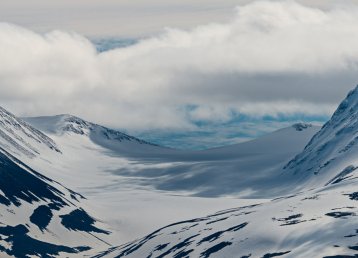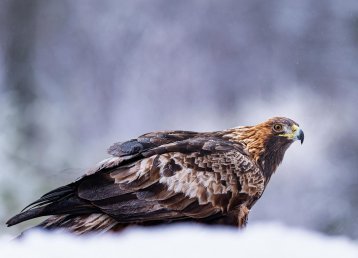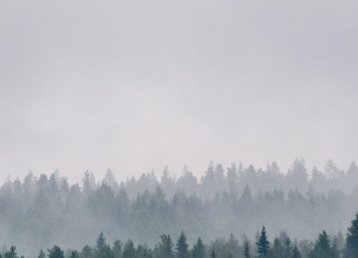It is not by chance that the reindeer on Svalbard are short-legged, while the reindeer of the woodland Sámi villages in Sápmi have longer legs. Long legs are a disadvantage on mountain slopes swept by winds coming off the Arctic Ocean, but they are a great advantage in the deep woodland snow. The reindeer is ideally adapted for life in the Arctic.
The antlers
Take the antlers, for example. Unlike many other antler-bearing animals, both male and female reindeer have antlers. But, while the bulls shed their antlers in late autumn, the cows keep theirs. The mother must be able to protect her calf from predators. Her antlers also help her to keep bulls away from her fodder. Also, in winter, heavy antlers are an encumbrance for bulls after the rutting season. They must conserve energy.
The fur
It has been said: “The reindeer has a shiny red nose and lives in a harsh environment where food is scarce”. Besides the fact that it only has a shiny red muzzle in Disney productions, the reindeer is well-adapted for thermoregulation and finding fodder. The reindeer’s winter coat provides highly efficient thermal insulation. But cold weather poses a problem only if the animal has developed its summer fur and summer is delayed. The more significant issue, instead, is how to lose heat. Therefore, a system has evolved that allows blood to be circulated out to the legs, where a lack of subcutaneous fat means that the blood is cooled. Another mechanism enables the reindeer to lose excess heat. Like dogs, reindeer have large tongues and panting regulates their body temperature.

The muzzle
Perhaps the most fascinating feature to have evolved in a cold climate is the reindeer's muzzle – it is a highly efficient heat regulator. If it's cold the muzzle lowers the temperature and if it's warm it can release heat.
The muzzle
Perhaps the most fascinating feature to have evolved in a cold climate is the reindeer’s muzzle. Although it is not red, it is still noteworthy. It is a highly efficient heat regulator. When we humans exhale in temperatures of around minus 30 Celsius, a cloud of warm vapour forms around our faces with every breath. If we are walking, it freezes on our faces. This does not happen to reindeer. As the animal exhales, its muzzle lowers the temperature to 21 degrees Celsius. In this way, the reindeer avoids being covered in frost while at the same time minimizing heat loss. But the muzzle also functions oppositely, much like a heat exchanger. The reindeer can ‘open’ its muzzle and release heat, for example, if it is being pursued. But the animal also has other arctic adaptations.
Also read
Visut – a story of the reindeerThe eyes
Researchers have discovered that the reindeer’s eyes change colour with the seasons. This colour change helps reindeer to see better during the continuous darkness of winter when the reindeer’s eyes are blue and in the constant daylight of summer when the eyes have a golden colour. The blue-eyed winter reindeer can see ultraviolet, which is abundant in arctic light, allowing them to find food and see predators. In the wake of global warming, when one might imagine that the reindeer will slowly adapt to new conditions, a question arises. Can it be possible for the reindeer to do this in times such as these?
All factors considered, including the busy, modern lifestyle of the Sámi, the answer is probably no. On the other hand, the impact of a growing society, with highways, railways, power lines and hydro dams, is probably a much greater problem than whether or not, due to a changing climate, the reindeer will have time to change their migratory paths. One problem gives rise to the next, even for an animal that uses its nose to regulate its body temperature.
Meet a reindeer
It’s not unusual to spot reindeer while driving in Swedish Lapland. If you do so, slow down or make a stop and let them pass.
If you want a closer encounter with the reindeer, have a look at these places:






























